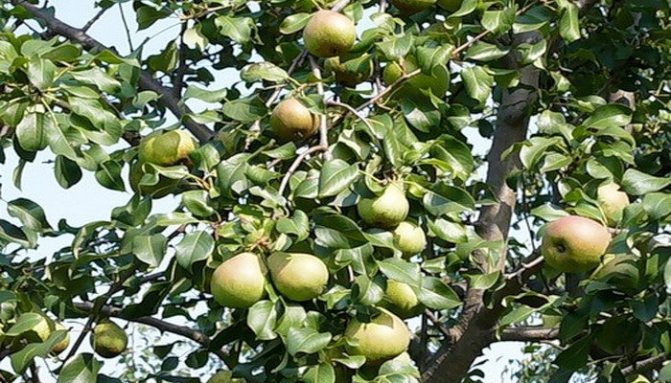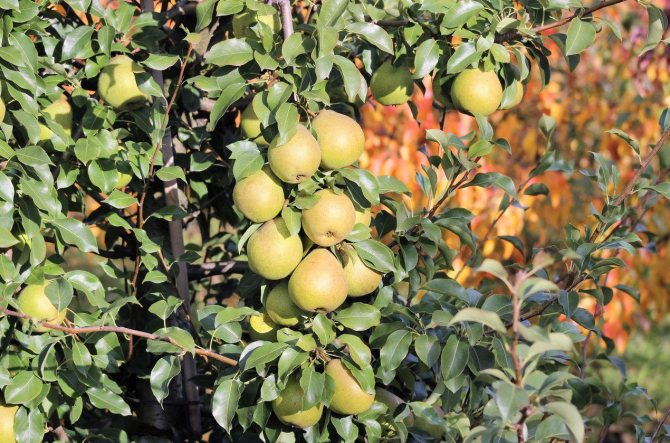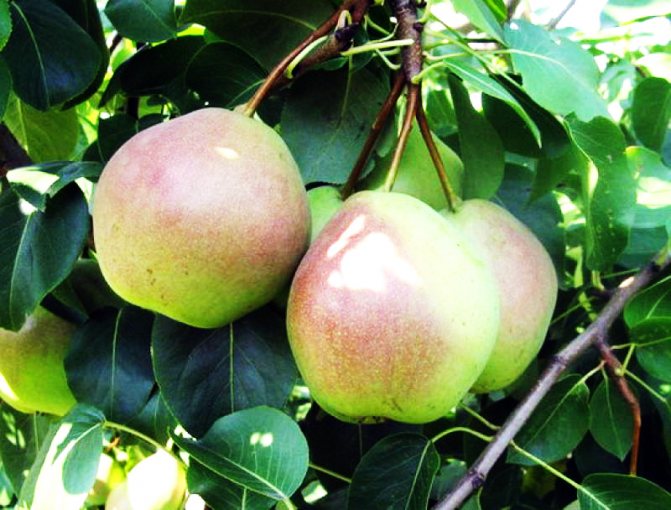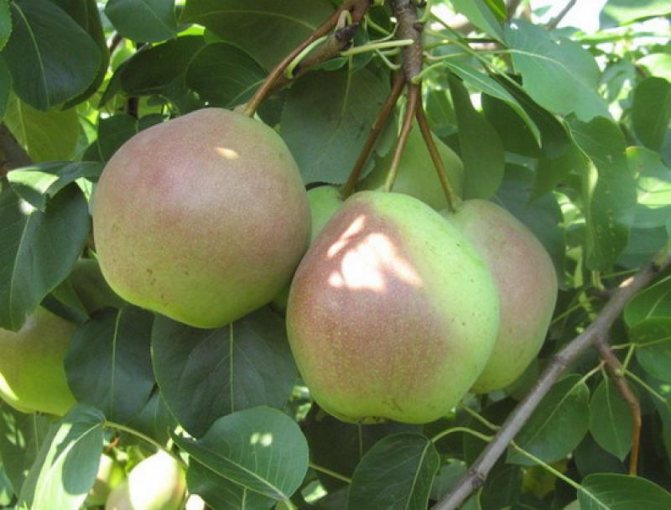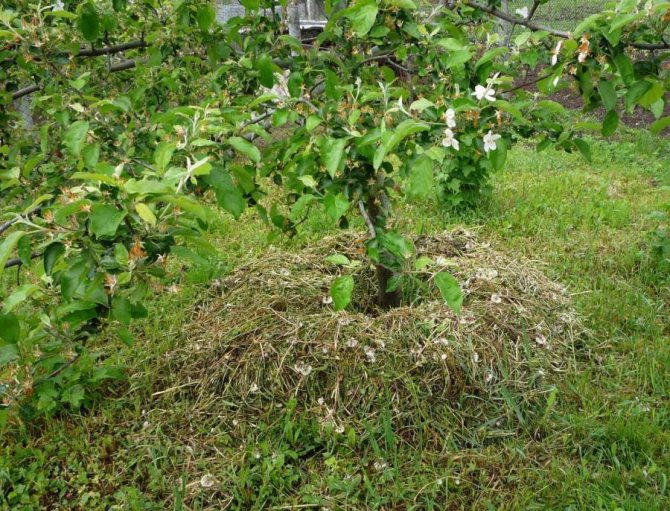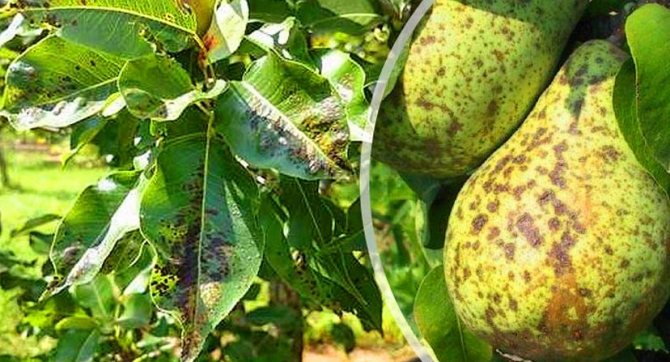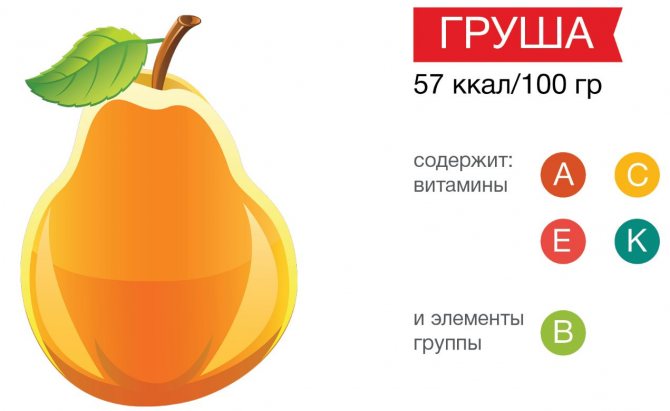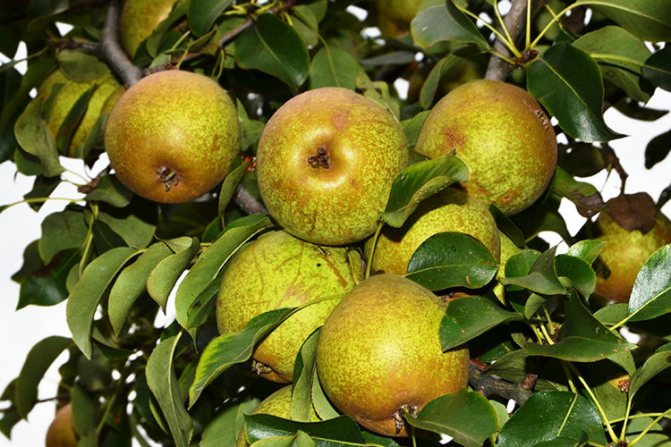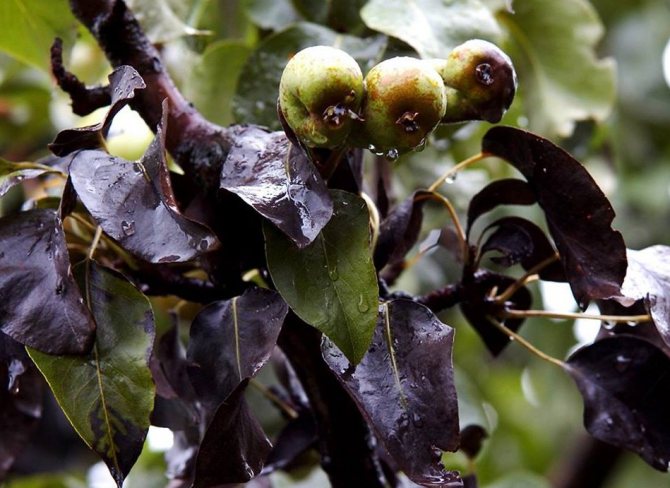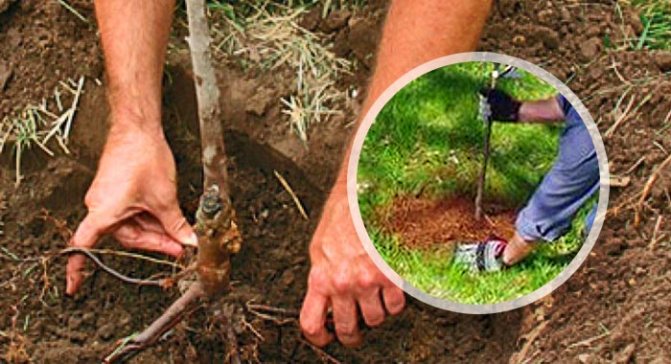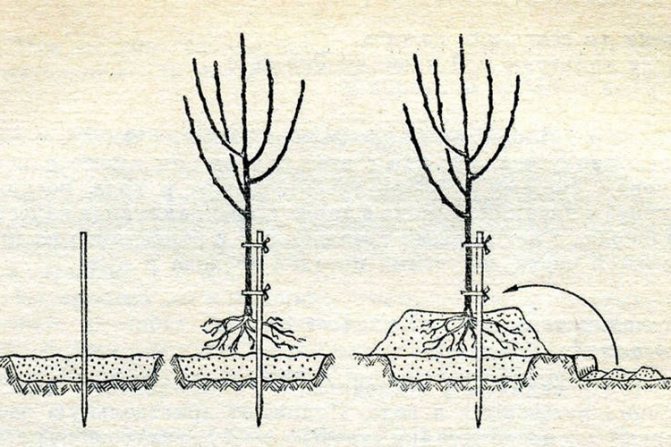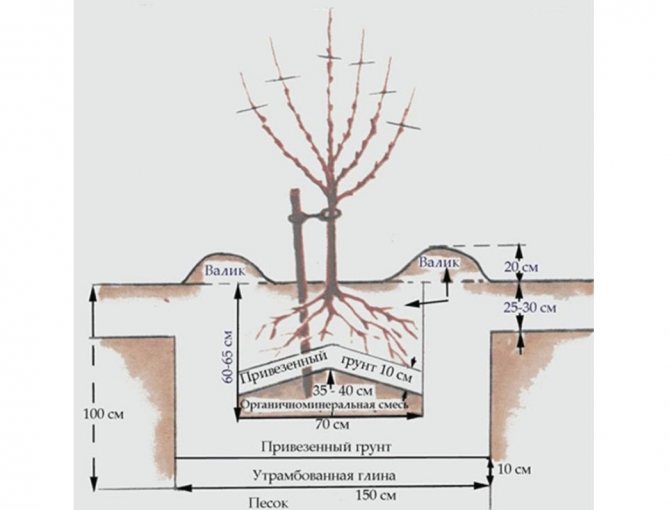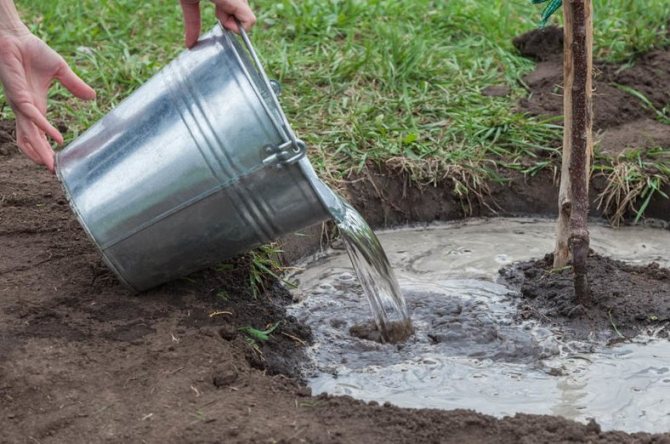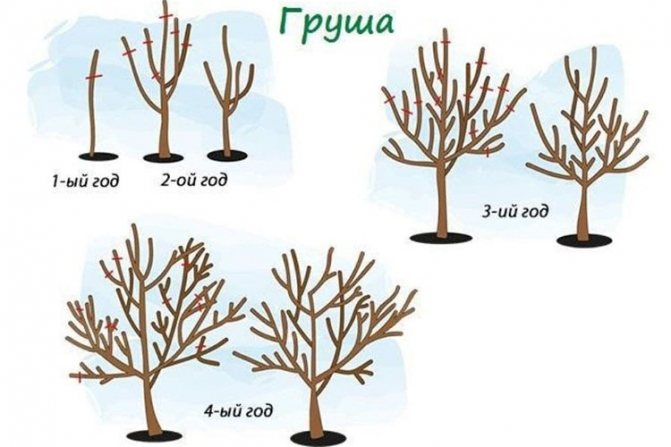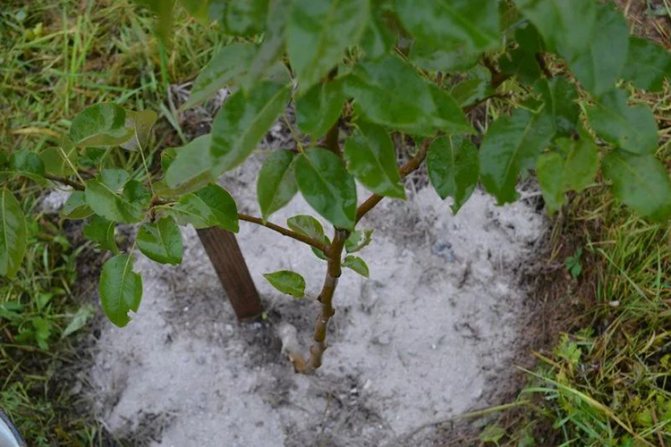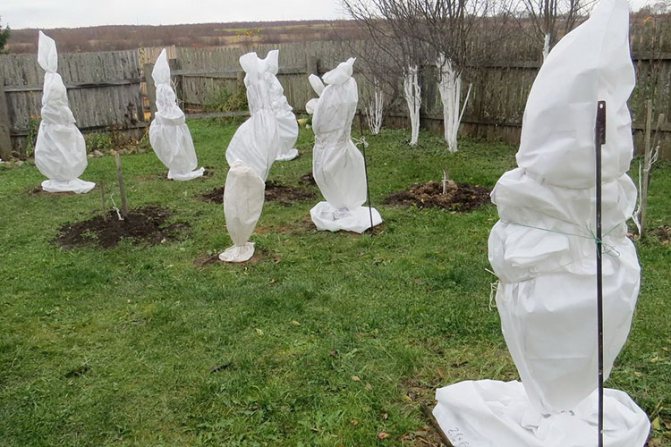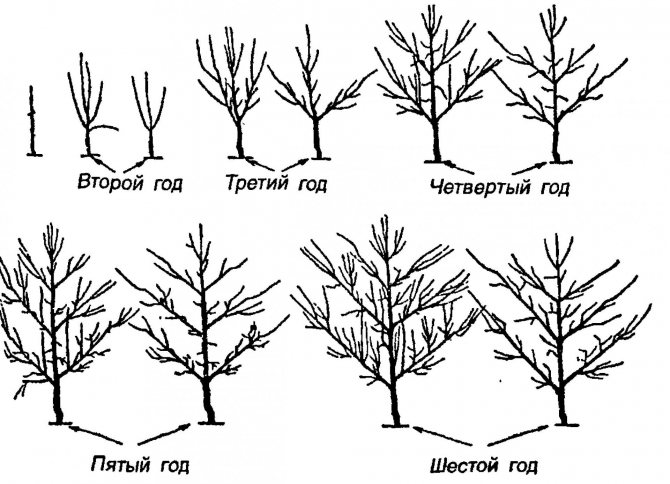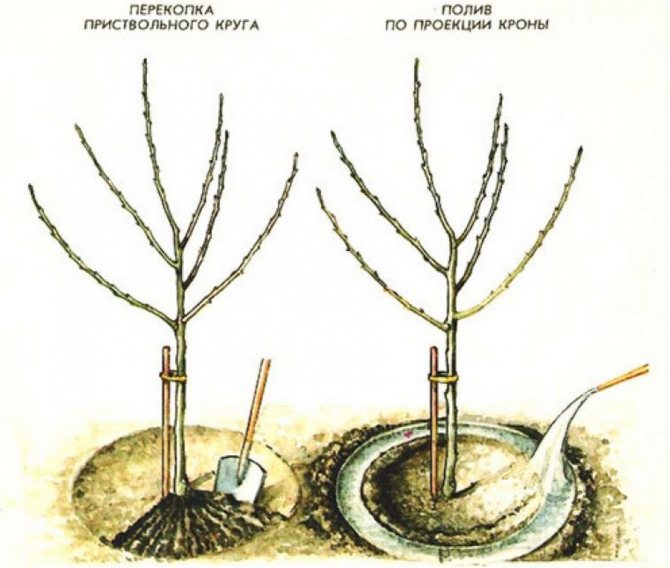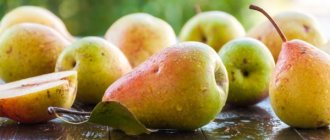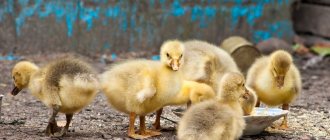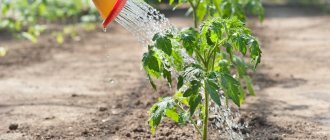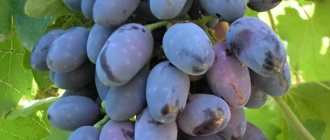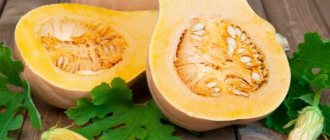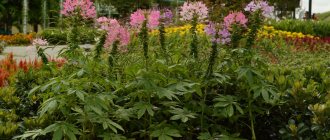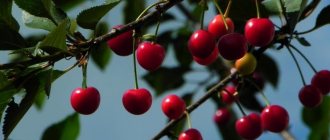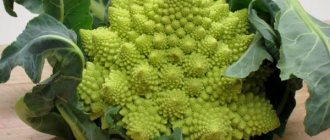Description of the pear variety Belarusian late
The tree grows from 3 to 5 m in height, the volume of the crown is about 2.5–4 m. The crown in its adult state will be dense and spherical. Pear branches grow at about a 90 ° angle relative to the trunk, with their tips rising, reaching towards the sun.
The pear shoots are medium in thickness, their shape is geniculate. The bark is covered with multiple small lenticels.
The buds are small and not pubescent, conical in shape. They grow bent from the trunk. Small leaves grow and take the shape of an ellipse with a wavy and finely serrated edge. They are oblong, and their top twists like a screw.
The leaves are green, with a slight light shade. The veins are weakly expressed. If you touch the leaf, it will be smooth. The petioles are of medium thickness and rather short, not pubescent.
The flowers are large. The petals are oval and most are white.
While waiting for the fruits, be patient - they will appear in 3 or 4 years.
Belorussian late has a medium-sized fruit. They weigh about 100 to 120 g. The shape is correct. Pears are wide, medium-sized. The skin of the fruit is rough and dry to the touch. Subcutaneous dots of a light brown shade will be noticeable on it. The skin is rather dull.
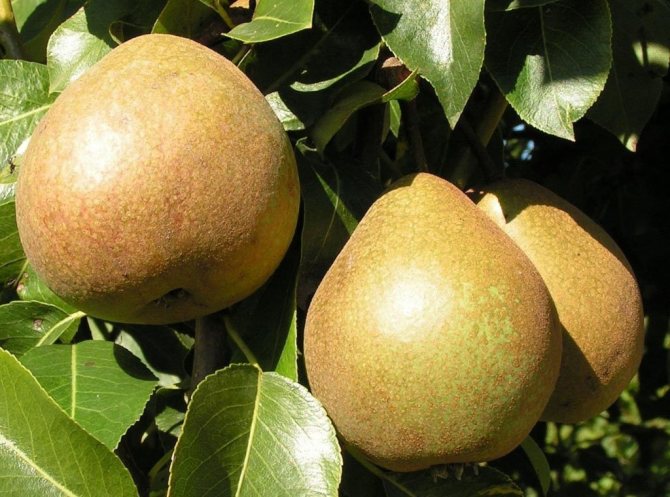
Belarusian late pear is tasty, juicy and aromatic
A pear is harvested from a tree when it is mostly green in color, with a brownish-red blush. It becomes sweet and tasty when consumer ripeness is reached, then the skin turns orange-yellow with raspberry barrels.
The fruit stalks of the pear are straight and short, located at an angle. There is a small funnel in the thick part, it is narrow and rusty. A small ellipse-shaped heart of a pear.
In the presence of a middle subasculum tube. It is rather narrow and cupped in shape. If you cut the pear in half, you will find small brown seeds.
The pulp of a pear is of medium density, white. If you look closely, you will notice fine graininess. The pear tastes juicy and oily, has a pleasant aroma.
Ripe pulp is tender, melting in the mouth. It is sour, which is refreshing, but more sweet. Experts tasted this variety and out of 5 points they gave it from 4.2 to 4.4.
Belorusskaya late is a versatile variety with excellent keeping quality.
The history of the creation of the variety
As the name implies, the birthplace of the variety is the Republic of Belarus. It was bred in the 60s of the last century at the Belarusian Research Institute of Fruit Growing, located in the Minsk region. Its authors are talented breeders N.I. Mikhnevich, N.G. Myalik and Yu.K. Kovalenko, who used the French pear Kind Louise in their work.
In Belarus, the pear received an official permit for cultivation in 1989. In the Russian federal institution "State Sort Commission", it appeared in the register only in 2002. For its cultivation, the Central and Northwest regions were identified, where it showed good productivity.


Belorussian late is often chosen as one of the main types of pear trees in the formation of industrial gardens in Belarus, Russia and the Baltic states. Also, the variety is used in breeding trials and becomes the basis for the creation of new varieties of fruit trees.
Advantages and disadvantages of the variety
Advantages:
- The tree is of medium height, which does not make it difficult to pick the fruit.
- The pear of this variety has excellent early maturity.
- The harvest is high.
- The pear is delicious.
- Not sick with scab.
- Whole fruits can be stored for 5 months or more.
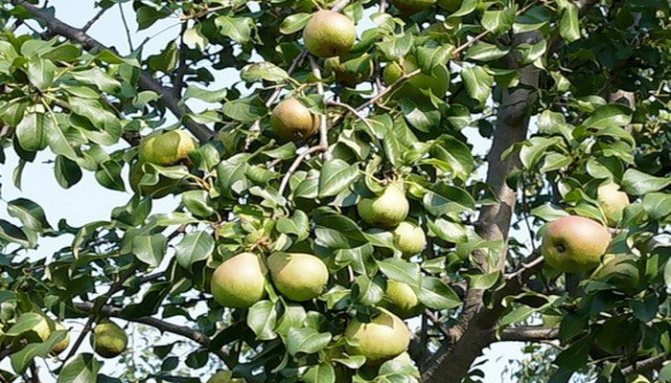

The Belorusskaya Late variety is distinguished by good yields.
Disadvantages:
- The variety has average frost resistance. In a harsh winter, the trunk can be wrapped with a layer of straw, or better with paper, so that the tree is less frozen.
- The fruits have a somewhat dense and therefore rough skin when eaten. There are rough spots on the peel.
Pros and cons
Advantages of the pear variety Belorusskaya Late:
- resistance to temperatures below -30 ° С;
- drought tolerance;
- low maintenance requirements;
- quick adaptation to weather conditions;
- stable high yield;
- fruiting in the 3rd year after planting;
- pleasant taste;
- resistance to transportation;
- keeping quality.
Disadvantages of the variety:
- lack of immunity to scab and bacterial burn;
- decrease in fruit size while increasing yields;
- tendency to thicken the crown;
- the need for additional pollinators.
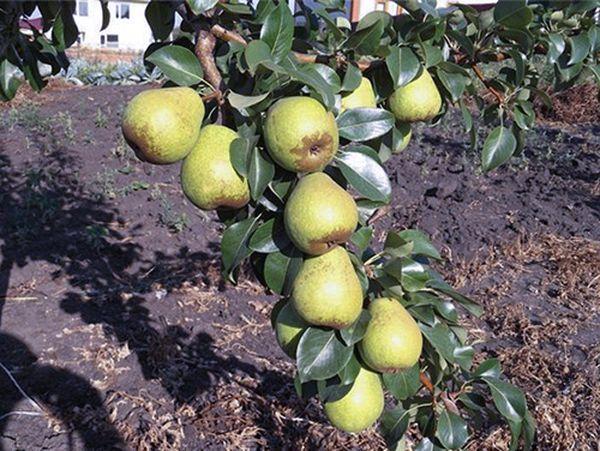

Landing
If you plant the Belarusian late variety in spring, the seedlings should be planted in the soil a week or 2 after the snow melts from the site. In autumn, you need to be in time before the first frost.
Choosing a good seedling
When buying a seedling, pay attention to some of the nuances. How it should look like:
- The bark appears to be dense and lively, not coagulated and dry. The leaves are not dry.
- Feel the branches. They should be smooth and firm.
- Examine the seedling for broken or dried roots. They, like branches, must be resilient, flexible. It is great if at least 3 thick roots depart from the trunk, and additional small roots from them.
- The pear must be grafted. The grafting site has a smooth bark.
Be sure to tear off the leaves on the seedling when planting. Then they will not pull from the tree the moisture it needs to adapt to a new place.
If you decided not to plant a pear in the next few hours, then wrap the roots with a damp cotton cloth. Then wrap in a plastic bag and tie at the trunk. Before planting, free the roots from the bag and tissue, put in water for at least 3 hours.
Where to plant?
The pear will grow best on black soil. A free plot of 4 m2 is required. The plant loves the sun. A seedling, like an adult pear, should not shade anything too much.
A young plant requires a loose soil with medium moisture. Do not plant it where subsoil water constantly stands. The roots will start to rot and the pear will die. If you plant in soil with a lot of sand or clay, it will grow slowly and yield poor future harvests.
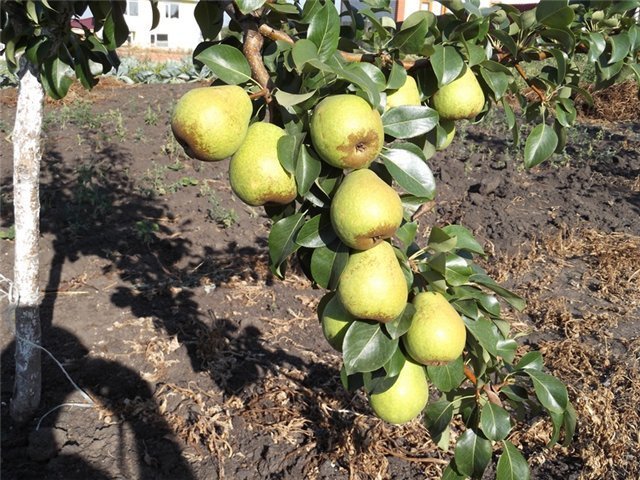

How to prepare the soil?
An experienced gardener will definitely prepare the soil before planting the plant: he will loosen the soil, apply mineral and organic fertilizers, and water the hole.
Select a suitable area and dig a hole 0.6 to 0.8 m deep. The soil set aside should be mixed with 2 buckets of high-quality compost, or better manure. Add sand here - 2 buckets, phosphorus - 20 g and potassium - 30 g.
If your land has high acidity, you need to lime it. The deficiency can be corrected by adding slaked lime, dolomite flour or powdered limestone. The application rate directly depends on the acidity level:
- in acidic soils, with a pH of 4.8 - 5, add up to 400 g of lime per 1 m2;
- in highly acidified, pH 4, add from 600 to 700 g per 1 m2.


The planting hole should be prepared in advance.
When it is warm and dry outside, you can start planting trees.
Step-by-step planting process
- You prepared the pit in advance.Now you need to make a depression in it. The roots of the seedling can be open or closed (with an earthy clod). In any case, the size of the pit should correspond to the size of the root system.
- Place the tree in the groove. The root collar should rise 7 cm above the soil surface.
- Now cover the roots with soil. At the end, you need to carefully tamp the earth with a shovel.
- Water the tree well. This takes about 30 to 40 liters of water.
- After the water has been absorbed, cover the trunk circle with wood chips or dry grass.
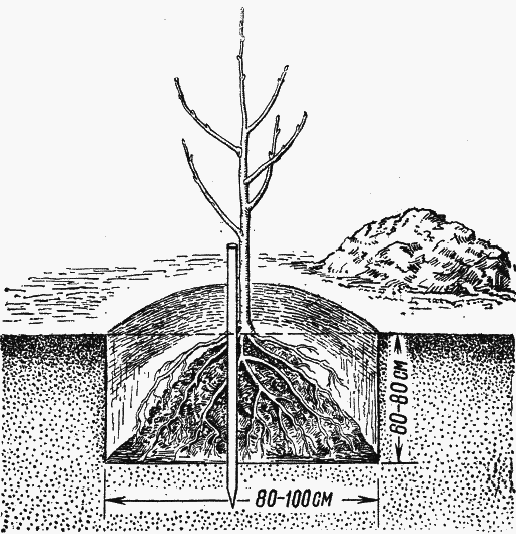

The planting pit must match the size of the pear root system
Planting and preparing for it
A correctly selected seedling, planted in prepared soil in a suitable place at the optimal time, guarantees a good harvest of this pear variety.
Did you know? According to ancient Chinese superstition, sharing a pear with a person means separation from him.
Optimal timing
It is best to plant this variety in the spring, when the soil warms up and the danger of frost return is over. In the regions of the middle zone, this period begins mainly in the second half of May. In the more southern regions, autumn planting is also practiced, which is carried out 2 months before the onset of frosty weather.
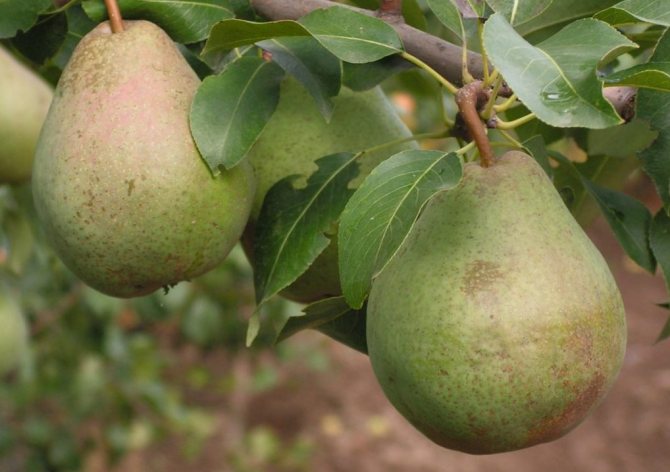

Choosing the best seedling when buying
It is best to buy seedlings in specialized nurseries at the age of 2, which is characterized by maximum survival rate. In this case, you should pay attention to:
- the bark of the tree, which should be smooth, without signs of peeling and cracks;
- tap roots, which should be at least 3;
- shoots, the number of which must also be at least 3 and which must be flexible and resilient;
- the presence of a grafting site, the absence of which indicates that the sold seedling is a seedling, very often not able to reproduce the characteristic features of the variety.
Important! Under no circumstances should a pear tree of the Belorusskaya late variety be planted on soil where the distance from its surface to groundwater is less than 2 m.
Choosing a place for planting pears
Like all pears, Belorusskaya late is demanding on good lighting. In its absence, the yield decreases, the fruits become smaller and lose sugar content. The lush crown of this variety, in addition, requires space. Each tree requires a space of at least 16 m². There will be no full harvest if the pear is planted in sandy or clayey soil. It feels best on loose chernozem soil with an acid-base balance at a pH of 5.5–6.


How to grow correctly
Gardeners know that pears are unpretentious trees and Belarusian late pear is no exception. All she needs is to apply top dressing in a timely manner, cut dry branches in spring and autumn, carry out preventive treatment against various diseases and pests. Years vary in yield. When you see that there are too many pears on the tree, they need to be thinned out, otherwise the fruits will grow smaller.
Barrel circle care
After planting the pear, you need to carefully look after the trunk circle. If weeds grow here, you can weed them by hand or mow them down. The soil does not need to be completely dug up with a shovel, so as not to accidentally damage the roots. You can loosen the soil around the trunk gently with a pitchfork or a pin.
It is better not to plant anything in the trunk circle. It is important to keep it clean. Weeds can become a shelter for pests.
If you do not want weeds to grow near the trunk, you can treat this area with herbicides. Carry out processing only in calm weather, when there are no gusts of wind. Do not let chemicals get on the trunk or leaves of the tree.


When caring for the near-trunk circle, do not forget to loosen the ground after watering
Watering
Pear Belorusskaya late normally tolerates temporary drought in summer.Additional watering will be required if there is no rain for a long time and the weather is hot. Then it is enough to pour from 50 to 70 liters of water under 1 tree. The irrigation liquid is settled in large containers, for example, barrels. Before watering, it is advisable to warm up the water a little in the sun.


Young seedlings need generous watering
Pruning
In order for a young tree to bear fruit well and not grow too tall, you need to take care in advance and shape its crown. At the planted tree, it is enough to leave 3 or 4 strong branches, and cut the trunk at the top by ¼ of the total height.
You need to prune branches in early spring, when there is no active sap flow. In the fall, inspect the tree and carry out preventive pruning by removing dry branches damaged by insects or diseased ones. Thin this way annually. This will protect the tree from the spread of diseases, reduce the number of pests. Thanks to these measures, the yield will be higher.
Remember that the branches that grow deeper make the crown thicker. They should be removed first. If you notice weak or long branches, they are also cut off. Use a sharp pruning shears or garden shears when thinning.
After pruning, wounds should be lubricated with garden varnish, which can be purchased at a specialized store.
Video: pruning a young pear
When large branches are damaged, they need to be cut into a ring.
Pruning requires a well-sharpened garden tool. These are pruning shears, a sharp garden knife or pruning shears. If the tree has grown tall, then a stepladder will be needed.
Preparing for winter
Preparation for winter begins in the fall. All fruits are removed from the pear. Fallen leaves are collected with a rake under the tree. After all, insects are definitely hiding under them, which can bite into the bark, lay eggs there.
In dry weather, they clean the bark of adult pears from moss, carefully remove the old layer, which is cracked and wrapped in places. Dry branches on the tree must be cut off in time. Lubricate the cut points generously with garden varnish. Trunks and skeletal branches should be covered with lime mortar.
Around mature trees, the ground needs to be dug into half a shovel bayonet. Most often, insects and the larvae laid by them are located at a depth of no more than 15 cm from the surface.
The Belarusian late pear perfectly tolerates moderate cold, but when it is -20 ° C, the roots that are closest to the surface of the earth can freeze. To avoid this, the trunk circle must be covered with peat or small wood shavings. Be sure to cover the roots of young trees with mulch. Experts recommend insulating the trunk of a pear by tying it with paper or any breathable material.
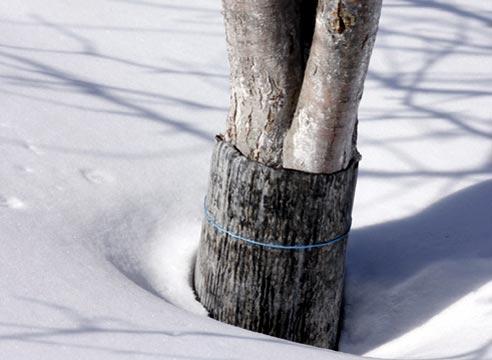

Experts recommend that the trunk of a pear be wrapped with a covering material
Whitewash
In spring, whitewashing protects against diseases, pests and sunburn. It is important to process pear trunks with lime not only in spring, but also in autumn. Autumn whitewashing will help:
- prevent the development of fungal diseases;
- save from parasites;
- protect from frost.
Do not neglect the recommendations of experienced gardeners and process pears 2 times a year. In the fall, whitewash must be done from October 15 to November 15 in dry weather.
You can buy whitewash in the store, but you can do it yourself. It's simple:
- Mix the following ingredients: lime - 2.5 kg, copper sulfate - 0.5 kg, clean water - 10 liters, wood glue - 0.1 kg.
- Stir everything thoroughly to dissolve the ingredients well.
- Let the whitewash infuse. It takes at least 2 hours before it can be used.
Top dressing
In the first planting year, the seedling does not need to be fertilized. The food brought in at landing will be enough for him. The first feeding is applied after 2 or 3 years. This can be done foliarly or by root.
You need to feed the plant in spring and autumn. In the summer, you can do foliar dressing.This is optional if it seems to you that the plant is weakened. You will notice the lack of trace elements in the condition of the tree and its fruits.
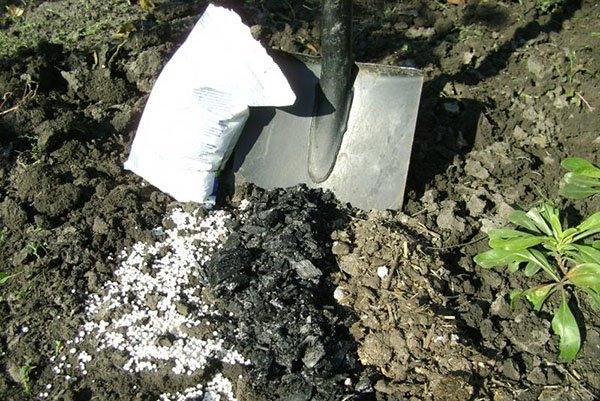

In order for the Belarusian late to grow healthy, it needs to be fertilized on time
Top dressing for pears depending on the season - table
| Season | Type of feeding | Period | Drugs |
| Spring | Root | When it blooms |
|
| After it fades | A solution of 1 part nitroammofoska in 200 parts of water. The norm for one tree is 30 liters. | ||
| Summer | Foliar | June 15-30 | Solutions with phosphorus and calcium are prepared according to the instructions. |
| Fall | Root | At the end of September | Solution: superphosphate in granules of 2 tbsp is taken for 10 liters of cold water. l. + potassium chloride 1 tbsp. l. This is enough for 1 m2 at the trunk. For 1 m2 of the trunk circle, take from 120 to 160 g of ash. It is brought in for digging. |
Testimonials
Maria
Belorussian late was not for nothing that it was bred in Belarus - I have four trees near Minsk in my dacha and I am not overjoyed. The harvest is enough for yourself, all relatives and friends, with both fresh pears and dried or frozen ones. The taste is excellent, cool and refreshing in the summer. I can only recommend this variety, it will definitely not disappoint you.
Nikolay
I planted a tree three years ago and now it is my favorite pear. It is quite average in all respects, but it is reliable and easy to care for - the main thing is not to over-water, because one tree actually rotted alive for me - I planted it in an unfortunate place, the groundwater was too high.
Nataliya
My favorite variety, planted in the garden back in the 2000s and since then we are happy. I am not a gardener, I need a dacha for relaxation, so I plant fruits that are beautiful to look at and easy to care for - so that no extra work is required. I can't say that Belorusska is the most simple tree in this regard, but in general it is quite simple to care for it. And the fruits are delicious, sweet, very pleasant and surprisingly many of them.
Diseases and pests
If you want to get a bountiful harvest so that the tree does not hurt (scab, etc.), and insects do not erode it, carry out preventive treatment against diseases and pests.
Diseases characteristic of the variety - table
| Disease | Symptoms | Control measures | Prophylaxis |
| Scab | Spots and pustules appear on the surface of fruits and leaves. Infection leads to drying and falling of leaves, and the fruits stop developing and become deformed. |
|
|
| Fruit rot | Brown spots cover the fruit, after which it becomes loose and tasteless. As the spots grow, the fruit is mummified. |
|
|
| Leaf spot | Small patches that cover the leaves grow and lead to loss of foliage. | In the spring before bud break - Bordeaux liquid. After flowering - copper-containing preparations: Champion or Meteor. |
|
| Lichens and mosses | Hinder the flow of oxygen to the tissues of the plant and slow down its growth. Can cause infection with fungal diseases. |
|
|
Photo gallery: how diseases manifest


Scab-infested pears
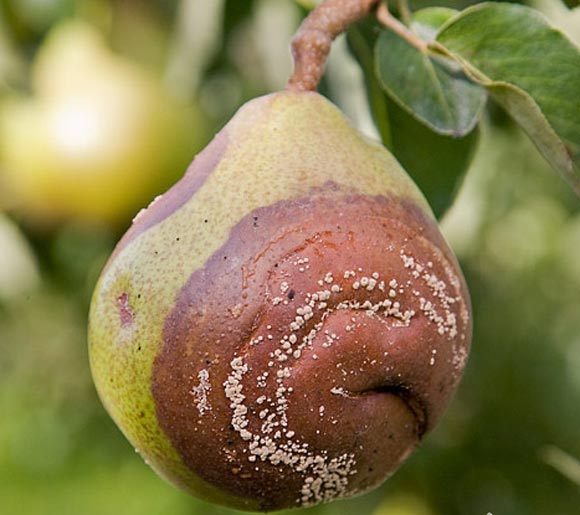

Fruit rot on a pear
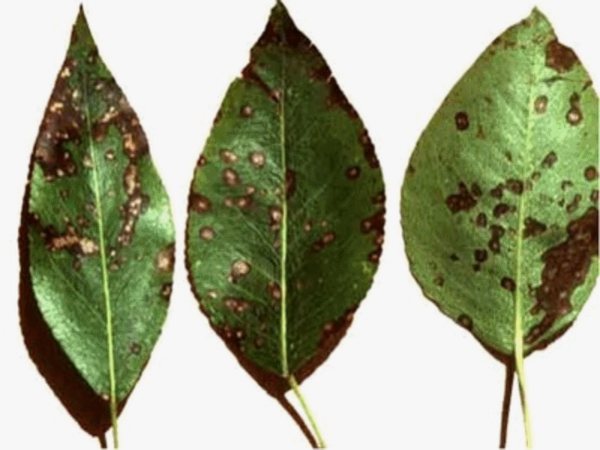

Spot or septoria, a fungal disease leading to leaf loss


The moss covering the trunk of the pear is a refuge for some pests.
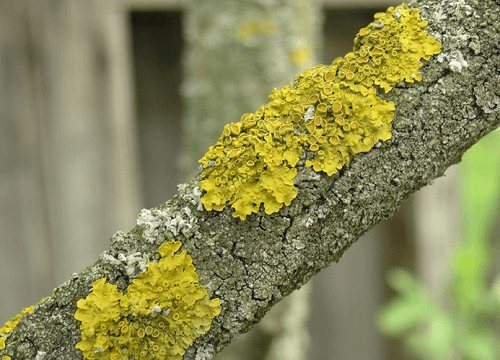

Lichen disrupts the flow of air to wood
Pests that can attack a pear - table
| Pest | Method of struggle | Manifestation | Prophylaxis |
| Aphid | We use insecticides: Actellik, Kinmiks, Fitoverm, Lepidocyte, Karate, Aktara. Choose any of them and prepare the solution according to the instructions. For a young tree, use 2 liters of the drug, for an adult - 5 liters. | It settles in colonies on leaves and young shoots, weakening the pear. |
|
| Moth | The moth caterpillar destroys the leaves. | ||
| Leaf-eating | Harm the foliage. | ||
| Leaf rollers | It feeds on leaves and rolls them into a tube. |
Photo gallery: how to recognize pests
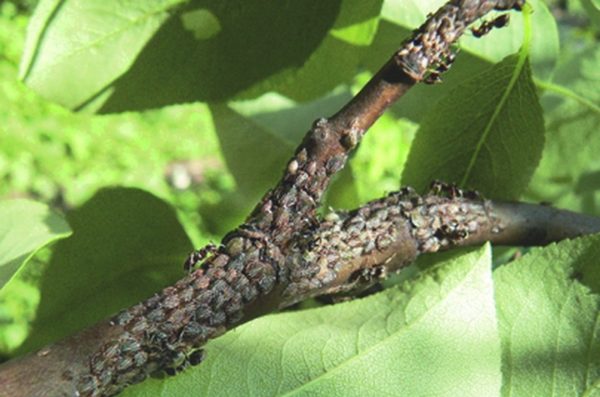

Aphid colony can severely weaken a pear
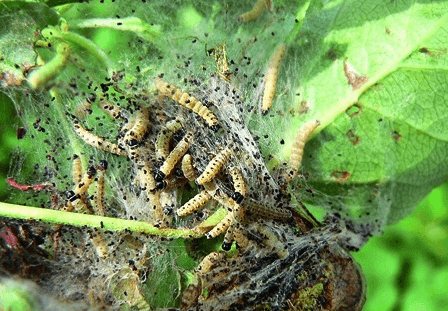

Ermine moth caterpillars damage leaves Leafworm feeds on leaves and rolls them into a tube
Pollinating trees
Belorussian late is a partially self-fertile plant. It is capable of pollinating itself, and if only one tree grows on the site, it will yield a crop. However, to increase productivity, pears with the same flowering period should be planted nearby. The ideal companions for this variety are Bere Loshitskaya and Oily Loshitskaya.
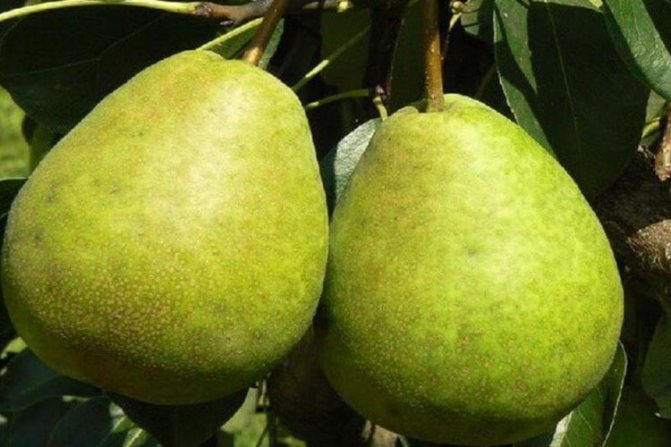

Bere loshitskaya


Oily loshitskaya
Harvesting the harvest
Late Belorussian pear ripens completely by mid-September or early October. This means that you need to collect the fruits, so that they are well stored, 2, or better 3 weeks before this time. Consider your region, how warm you are, and how quickly other late varieties ripen.
Pears are picked by hand. They use a bag whose bottom can be unfastened. Fruits are folded neatly in a container. It is important that their surface is not damaged, there are no dents or the stalk does not accidentally come off.
The yield of the Belorusskaya late is excellent. On a young tree, you will harvest 70 to 100 kg of fruit. A mature plant that grows in excellent conditions will give you a minimum of 110 and about 180 kg.


The fruits of the Belarusian late pear
What's the best way to store the fruit?
It has already been mentioned that pears of this variety can be stored for 5 months or longer. If you keep them on an unheated balcony, basement or cellar, then they will definitely last until the end of winter.
The room where they will be stored must have excellent ventilation and a temperature from 0 to 3 ° C. In a container, the fruits are placed in one or in 2 layers. It is best to put paper between them. Ideally, each pear will be wrapped in paper.
When you save the fruits, it is important that there are no sudden temperature fluctuations in the room. This will help prevent the fruit from fogging up and keep it from spoiling.
What to cook?
Fruits are eaten ripe with pleasure, best of all fresh from a branch. Those that are a little broken or without a stalk are processed into compotes or preserves, jams, jelly, various desserts, etc. They can be used to make pie filling, cook porridge, process on mashed potatoes, squeeze out juice. Dried fruits are harvested from Belarusian late pears for the winter.
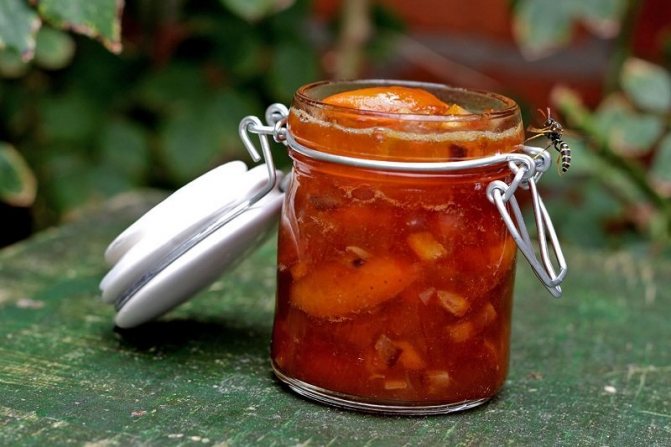

Belarusian late is good for making jam
Collection, storage and use of the crop
The fruits of the Belorusskaya late are harvested in mid - late September (depending on the weather).Pears are stored for a very long time - at least five months, so they are usually consumed in January-February, and sometimes in April.
The fruits are best preserved in wooden boxes at a temperature of +2 .. + 10 degrees, the room should be well ventilated.
If it is not possible to put pears in a box in only one layer, be sure to lay the layers with dry grass or paper.
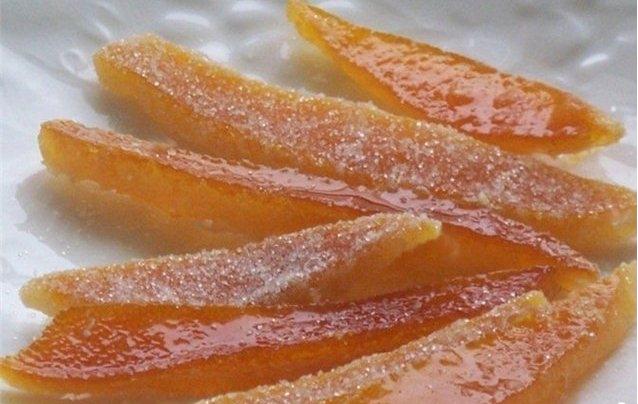

Pear produces excellent candied fruits - transparent and very tasty
The fruits of the Belarusian late can be used in all possible ways: eat fresh, cook jam, candied fruits, compote, jam, make dried fruits, juices, wine, use in confectionery, as well as folk medicine and pharmacology (in the production of remedies for colds and bronchitis).
Growing conditions
Caring for the variety "Belorusskaya Late" is simple and consists in timely feeding, pruning, as well as treatment against diseases.
Read also: Raspberry Yellow giant: description of the variety, planting and care rules, gardeners' opinions
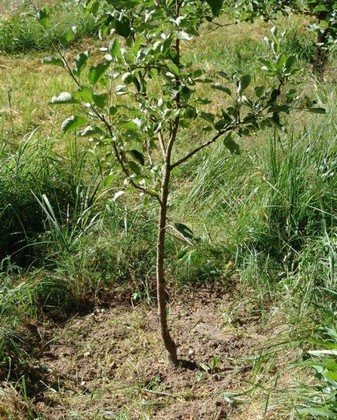

The trunk circle of the pear must remain free of weeds
For the first few years, the pear tree trunk circle must be completely cleared of weeds., while digging up the soil is not worth it. Planting clover, red fescue and meadow bluegrass under a tree will enrich the soil with the necessary substances.
The pear of the Belarusian selection is drought-resistant, but in especially dry periods, a volume of water up to 70 liters per plant is applied under the tree twice a week.
Purpose of pruning young pear trees - the formation of the future crown of the tree. For this, the trunk is cut to a quarter of its total height, and from 3 to 4 strong branches are left on the trunk. Pruning of mature trees is done in the spring. In this case, all damaged, touching large branches are removed from the crown.
The first feeding is carried out only 2-3 years after planting. Fertilizers for pears can be applied by root and foliar methods... In the future, autumn and spring dressings are carried out on a regular basis, summer foliar feeding - if necessary.


Wrapping the trunk of a pear will save the tree from winter frosts
Preparing a fruit tree for winter, despite its frost resistance, is necessary. It is recommended to tie the trunk with paper, and cover the trunk circles with a layer of wood shavings.
Planting rules
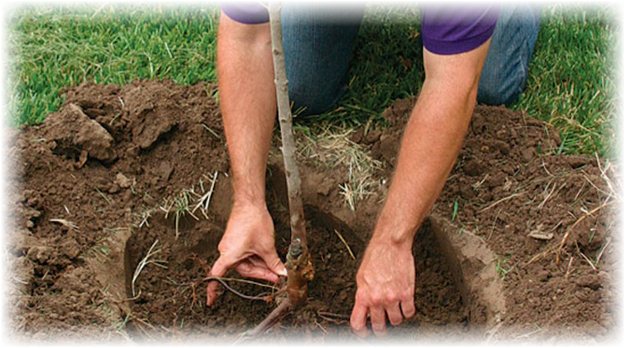

To get good yields of the pear variety, a healthy seedling must be planted in time at the right planting site. In the middle zone of the country "Belorusskaya pozdnaya" is planted in the spring not earlier than 5 days after the final snow melt and within 2 weeks. You can carry out the same work in the fall after the end of leaf fall and before the first frosts. It is desirable that the pear is dry on the day of planting.
Preparatory work:
- Choose a seedling. Signs of a healthy plant "Belorusskaya Late": dense bark, absence of thorns on the trunk, springy branches, fresh foliage, absence of damage and "dryness" on the roots.
- Determine the location on the site. Ideal option: loose and moderately moist chernozem, good lighting, no planting on the "square" 4 by 4 m, low groundwater (from 3 m). Clay and sandy soils are not recommended.
- They feed the land on the selected "patch". After digging a hole (up to about 70 cm deep), 2 buckets of well-muffled manure and sand, 30 g of potassium and 10 g less phosphorus are stirred into the resulting pile of earth. If necessary, the soil is deoxidized with ash or lime.
Landing technology:
- Remove the leaves from the pear seedling, cut off (if any) the spoiled roots and branches.
- "Run" the plant with its root system in water for 3 hours.
- Place a small pear in the hole.
- Cover with earth, compact thoroughly, working with the toe towards the trunk and shaking slightly.
- Pour out 3 buckets of water. The point of connection of the trunk with the roots should "crawl" out of the ground by 5-7 cm.
- Shake sawdust or shavings along the circumference under the barrel of the "Belorusskaya Late".
Description of plants
So, outwardly, the Belorussian late is a rather average tree. His growth is low, the shoots depart from the main trunk at almost right angles, while the branches always tend upward. This feature creates a round crown that looks quite thick.
Read also: Database of sweet cherry varieties - FGBNU VNIISPK
During the flowering period, the pear can become a decoration and pride of your garden - the crown is densely covered with huge white flowers. They are very delicate and consist of small oval petals.
The harvest ripens most often in September - but the harvest time may shift slightly depending on your region and the climate in it.
Fruit characteristics
The fruits of Belorusskaya late are usually medium in size, their weight usually reaches somewhere around 125 grams. Their shape is traditional pear-shaped. The fruits are covered with a rather dense skin, rough to the touch. Ripening fruits are green, ripe - orange-yellow, with a slight sunny "blush".
The pulp is white or milky. Its consistency is soft, delicate and even a little oily. At the same time, it is very juicy, sweet and sour in taste. Reviews often come across people who taste like refreshing.
To keep the crop even longer, you need to harvest it correctly:
- Don't wait until the pear is fully ripe - the fruit will be soft and spoil faster. It is better to choose the time a few days before full maturation.
- After picking, let the pears dry slightly in the sun.
- Now the fruits must be collected. The best storage options are special boxes, cardboard boxes or bags made from natural materials. Do not take plastic bags, it is in them that any food deteriorates most quickly.
Pear Belorussian late refers to winter varieties of pear
- The name of the variety is Belorusskaya Late Pear. This variety is included in the State Register of Breeding Achievements of Belarus.
- The form is a tree of medium height, has a dense, rounded crown. Skeletal branches extend from the trunk at almost right angles. Shoots of medium thickness, have a light brown bark.
- Leaves are light green, small, oblong, elliptical in shape, have wavy serrated edges, are attached to the branches with the help of short, bare cuttings.
- Flowers - white, petals are oval
- The fruits are medium in size, weighing 110-120 grams. The skin is rough, covered with small dots. At the time of harvest, the color of the fruit is green, at the time of consumption it becomes yellow with an orange tint. The pulp is juicy, white, tender, oily, medium density. The taste is sweet with a slight sourness. The fruits of this variety have a long shelf life, under suitable conditions they can be stored until April.
- Fruiting - starting from the 4th year of life, the yield is high. The fruits ripen at the end of September.
- Self-fertility is partial. To increase yields, it is recommended to plant Bere Loshitskaya and Oily Loshitskaya pears nearby.
- Frost resistance is quite high, however, young trees in severe frosts need light shelter and mulching.
- Disease Resistance - Resistant to major pests and diseases. Most often it is affected by scab.
- Soil requirements - prefers sandy loam-chernozem, loamy or sandy soils with a low level of acidity.
- Planting - the end of spring is considered the best time for planting.
- Attitude towards light - loves sunny and elevated places, protected from the wind.
- Varietal features.
- Poor soil.
- Incorrect fit.
- Poor quality seedlings.
- Inappropriate lighting.
- Diseases and pests.
- Lack of pollinating varieties.
- Lack of moisture.
- Northern winds.

